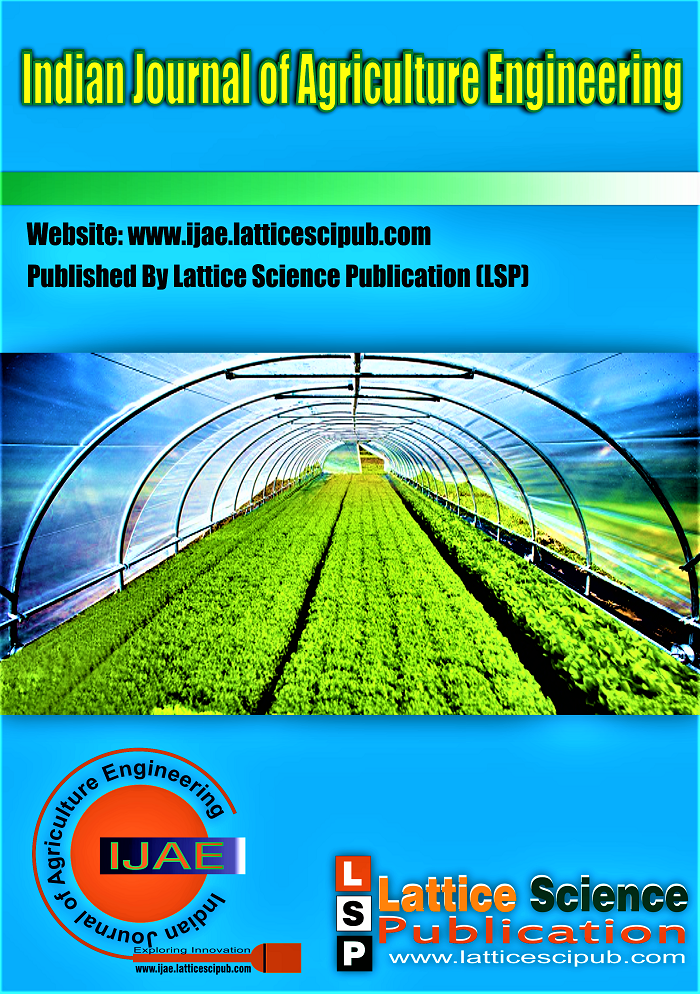Modeling the Filling Rate of Faeces in Ordinary Pit Latrines
Main Article Content
Abstract
Faecal sludge deposited into the pit latrine is subject to biodegradation. The aim of this research was to develop model for the filling rate of faeces in ordinary pit latrine together with the effect of shape factor on such fillings to prepare the minds of users on the filling characteristics of the pit based on contents, usage and environmental factors. Consequently, faecal sludges sampled from 100 pits already filled were subjected to laboratory analyses for their physico-chemical and biological characteristics. Models for the actual filling rate of faeces in ordinary pit latrines were derived using BOD, COD, VS, and TS data, calibrated and verified. For a more critical situation, models were also derived for the filling rates considering pit shapes that gave the actual pit filling in comparison with the general condition. From the results, the actual filling rate was lower than those obtained using BOD, VS and TS. However, the COD gave filling rate closer to the actual filling rate than other parameters since TS could not be used to assess the filling rate of faeces in pit latrines. The pits exhibited low filling rate in terms of BOD in 2 pits. In terms of COD, the filling rate was higher compared with that of BOD. Low filling rate was observed with volatile solids and only 3 pits exhibited moderately high filling rates whereas total solids had the highest number of pits with high filling rates. The filling rates for both the square and rectangular pits increased by 26.5% from 40 – 90 ℓ/capita/year to 50 – 112 ℓ/capita/year due to the shape factor and this was above the values obtained in existing models while that of the circular pit remained the same. Reduction in pit volume and increase in filling rate by faeces was due to dead corners as a result of clogging, thereby reducing the area available for faecal infiltration into the surrounding soil. Circular pits are more stable because of the natural arching effect of the ground around the hole and there are no corners to concentrate the stresses. Pits with flat sides are much more likely to develop clogging resulting to dead corners than the circular pit. From this study, it is therefore evident that the shape of pit latrine determines the actual volume and the filling rate of faeces in pit latrine taking into consideration geological and environmental factors. Thus for optimal design, our engineers should take note of the pit shape factor. Thus, the model can be used to determine the filling rate of ordinary pit latrines considering soil characteristics, ground conditions and other favourable conditions.
Downloads
Article Details

This work is licensed under a Creative Commons Attribution-NonCommercial-NoDerivatives 4.0 International License.
How to Cite
References
Journal Papers
APHA (1998) Standard Methods for the Examination of Water and Wastewater. 20th Edition. American Public Health Association.
Bhagwan JN, Still D, Buckley C, Foxon K. (2008). Challenges with Up-Scaling Dry Sanitation. Technologies. Water Sci Technol. 58(1); 21-27 WILSON, H.E (1978). Personal Communication. Institute of Geological Sciences, London. [CrossRef]
Coteral, J.A. and Dan, P. Norris (1979). Septic Tank Systems. Journal of the Sanitary Engineering Division. Proceedings of the American Society of Civil Engineers.
Foxon, K. and Buckey, C.A (2008). Scientific Support for the Design and Operation of Ventilated Improved Pit latrines. KS/1630/08. Water Research Commission in Press
Mara, D.(1984). ‘The Design of VIP Latrines’, TAG Technical Note. World Bank. Washington DC.
Nwaneri, C.F (2008). Biological Degradation Processes Within A Pit Latrine Pollution Research Group, Department of Biological and Conservation Sciences, University of KwaZulu-Natal, Durban 4041.
Grady C, Daigger G, Lim H, eds.(1999). Biological Wastewater Treatment. New York, USA. Marcel Dekker; edition n, ed.
Chapters in Books
Couderc AA, Foxon K, Buckley CA, et al.(2008). The Effect of Moisture Content and Alkalinity on the Anaerobic Biodegradation of Pit latrine sludge. Water Sci. Technol. 58(7); pp.1461-1466. [CrossRef]
Bouma J. (1974). New Concepts in Soil Survey Interpretations For On-Site Disposal of Septic Tank Effluent. Soil Science Society of America, Proceedings No. 38, pp. 941-46. [CrossRef]
Martin D, Potts L and Heslop V (2003). Reaction Mechanisms in Solid-State Anaerobic Digestion. The Reaction Front Hypothesis. Trans. Inst. Chem. Eng.; 81(B): 171 – 179. [CrossRef]
Thesis
Buckley C, Foxon K, Brouckaert C, et al (2008). Scientific Support for the Design and Operation of Ventilated Improved pit latrines (VIPs) and the Efficacy of Pit latrine Additives. KwaZulu-Natal: Pollution Research Group School of Chemical Engineering University of KwaZulu-Natal.





